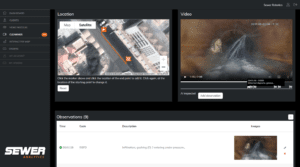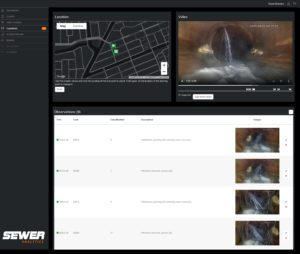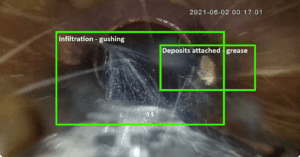Cleaner.com, by Stella Joy, june 27,2023
Artificial intelligence is the theory and development of computer systems that can perform tasks that normally require human intelligence (such as an operator coding pipe defects), visual perception, speech recognition, decision-making and translation between languages.
AI techniques lend themselves to solving complex problems involving large volumes of data. Data, by virtue of its magnitude, can challenge problem-solving initiatives. Data, regardless of size or level of complexity, requires organizations to promote clarity and consistency to make informed decisions. With an estimated 800,000 miles of wastewater sewers and 500,000 miles of lateral sewers in the U.S. alone, pipe inspections and the ability to perform condition assessments have become an attractive candidate for AI processes.
As it relates to condition assessments, the success of AI in sewers requires machine learning, automated defect recognition and advance analytical processes. Machine learning is an algorithmic process that helps software improve, like humans do, through iterative trial-and-error experiences using mass amounts of training data (such as photographs or video of known defects/features), to make better decisions or choices. Automated defect recognition is the software output that uses ML techniques, to progressively identify defects “observed” within individual images of video, and to advance analytical processes are the broad spectrum of processes uniquely focused on the analysis and leveraging of information in large data compilations. In sewer networks, this can embrace a wide range of studies from deterioration analysis of specific cohorts or eras of pipes, sustainable funding assessments and optimization techniques, among others.
NASSCO recognizes the use and growth of AI and machine learning within the sewer inspection and rehabilitation industry and is actively providing leadership on the subject, including the development of a workgroup and collaboration with software and hardware developers. Presently, there are no AI systems that NASSCO has certified for recognizing every PACP/LACP/MACP observation. End users may not need this level of functionality, however, if the observations that are recognized and captured are consistent with their individual goals for CCTV inspection. Regardless, the present advantage of AI for CCTV pipe inspection is its efficiency to code large volumes of legacy and new inspection data in a cost-efficient manner that is consistent with the quality standards per the “Guidelines for Quality Control of NASSCO’s PACP, LACP and MACP Surveys,” April 2022. The NASSCO AI workgroup additionally recognizes the following uses for AI-collected inspection data:
- Training aid to supplement and improve PACP coding for novice inspection personnel or operators becoming familiar with code classification for pipe types that they do not have experience coding
- Improved workflows whereby an AI algorithm is used as first inspection followed by manual operator checks to correct missing or inaccurately coded defects/features
- Quick coding of legacy inspection video for benchmarking purposes
- Cross-bore identification
- Embedment of NASSCO QC guidelines for automated quality validation
As the market evolves, NASSCO’s Software Committee, Infrastructure Condition Assessment Committee, Technical Advisory Council and other industry professionals will determine the best approach for assessing and rating ADR software products and their level of accuracy as they pertain to NASSCO’s PACP, LACP and MACP codes. While that process has not yet been defined, NASSCO will ensure that it presents a fair picture of AI/ADR technological capabilities and how they are applied in the field, knowing that it will evolve as the technology becomes more developed, advanced and accepted in the future.
NASSCO is committed to providing similar written updates on the subject to inform the industry, our users, and our membership on the advancement of AI in the PACP-environment. Later this year, watch for the release of PACP Version 8.0, which will incorporate current AI knowledge to support our students’ understanding of this topic.
To learn more, download NASSCO’s entire position document on AI technology at www.nassco.org.
About the Author
Sheila Joy is executive director of NASSCO. She can be reached at director@nassco.org.




